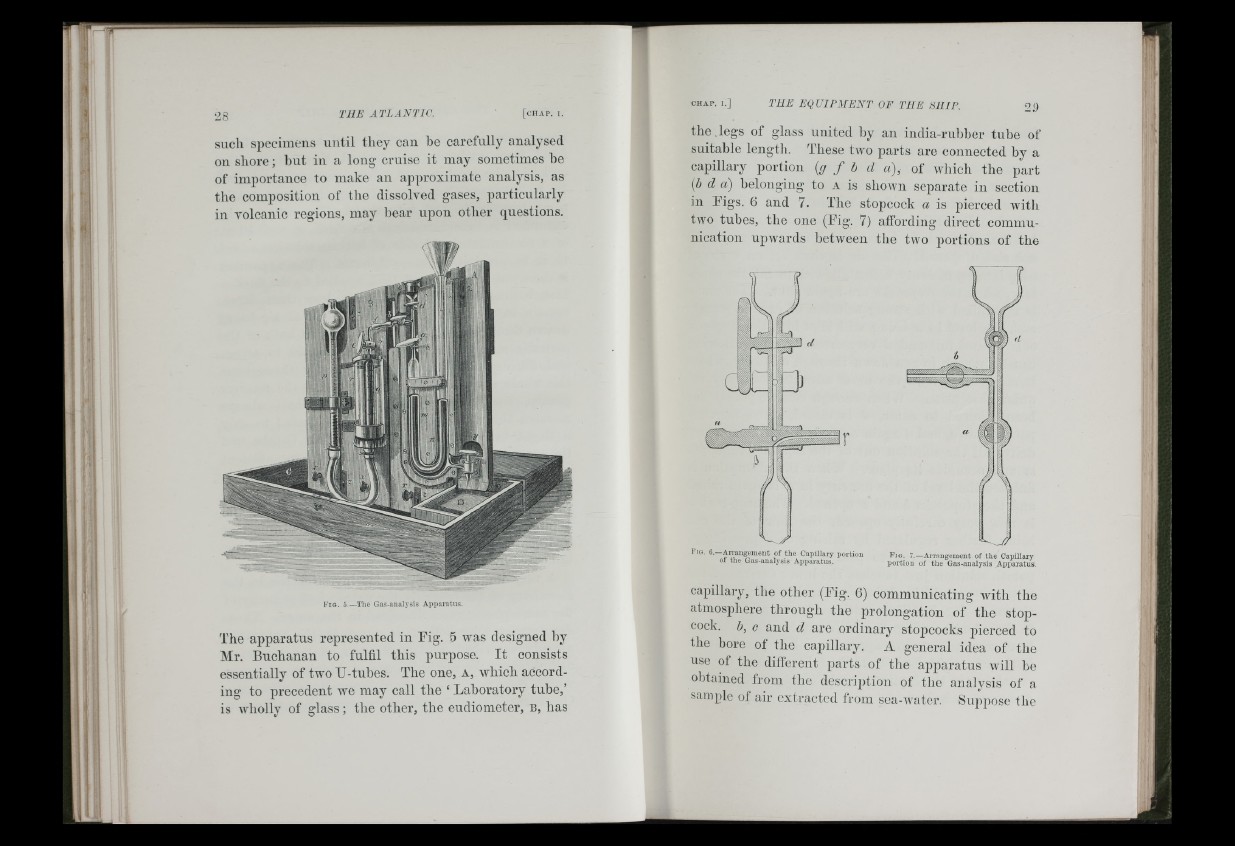
28 THE ATLANTIC. [UHAP. 1.
such specimens until they can he carefully analysed
on shore; hut in a long cruise it may sometimes he
of importance to make an approximate analysis, as
the composition of the dissolved gases, particularly
in volcanic regions, may hear upon other questions.
Fig . 5 —The Gas-analysis Apiiaratus.
The apparatus represented in Tig. 5 was designed hy
Mr. Buchanan to fulfil this purpose. It consists
essentially of tAvo U-tubes. The one, a , which according
to precedent Ave may call the ‘ Laboratory tube,’
is Avholly of glass; the other, the eudiometer, b, has
the,legs of glass united hy an india-ruhher tuhe of
suitahle length. These two parts are connected hy a
capillary portion {g f b d a), of which the part
(6 d a) helonging to A is shown separate in section
in Eigs. 6 and 7. The stopcock a is pierced wuth
two tuhes, the one (Eig. 7) affording direct communication
upwards hetween the two portions of the
Flo. 6.—Arraugement of the Capillary portion
of the Gas-analysis Apparatus.
capillary, the other (Eig. G) communicating with the
atmosphere through the prolongation of the stopcock.
b, c and d are ordinary stopcocks pierced to
the hore of the capillary. A general idea of the
use of the different parts of the apparatus will he
ohtained from the description of the analysis of a
sample of air extracted from sea-water. Suppose the